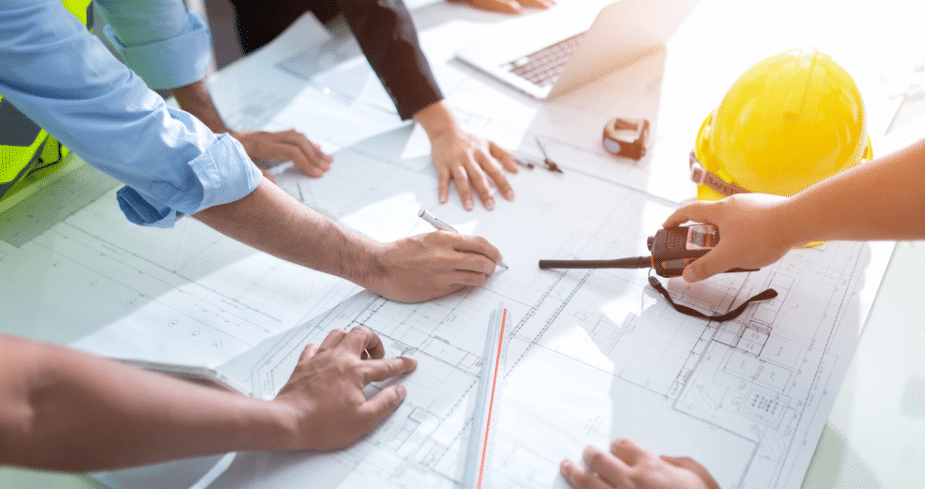The commonly available prevention guidelines for COVID-19 have mostly focused on social distancing, protective equipment and gears, and strict hygiene protocols. However, when it comes to construction industry, building design features can help by adding resilience for protecting occupants from infection. Engineers and Architects can create healthier spaces, while improving the overall building performance by adding effective design features.
Keeping that in mind, many industry authorities have published building design guidelines to help not only with prevention against the novel coronavirus, but also other infection diseases as well. The following are 3 of the major authorities:
ASHRAE: American Society of Heating, Refrigerating and Air Conditioning Engineers
USGBC: US Green Building Council (developers of the LEED certification)
IWBI: International WELL Building Institute (developers of the WELL certification)
The design guidelines and recommendations from the above authorities are not mutually exclusive, and complement each other in several ways. Collectively, they provide a thorough and solid reference for design professionals for effectively designing safe building spaces against infectious diseases like COVID-19 and others.
Let’s dive into the recommendations by each of the mentioned industry authorities.
ASHRAE: Preventive Measures Against COVID-19 in Buildings
Since the beginning of the coronavirus pandemic, ASHRAE has been releasing detailed thorough guidance for all kinds of building types against COVID-19. Most of their design recommendations mainly focus on 3 aspects:
Increasing outdoor ventilation
Upgrading air filters for effectively capturing tiny viral particles
Using Ultraviolet Germicidal Irradiation (UGVI)
There has been a lot of debate on airborne COVID-19, and since WHO recognized the imminent threat of coronavirus infection by exposure to aerosols in crowded indoor spaces, proper ventilation has become critical. Also chances of finding COVID-19 in outdoor air is very low, which means that the viral particles are capable of staying suspended in indoor spaces for a long time. For these reasons, ASHRAE highly recommends increasing the outdoor air flow as much as possible, while eliminating air recirculation. Ideally, ASHRAE recommends 100% outdoor air and 0% recirculation, however, in practicality, this is not possible. External factors like weather conditions, and building HVAC capacity also affect the ventilation needs. Therefore, outdoor airflow should be increased as much as possible, within the limits imposed by the building’s HVAC systems and weather conditions.
When it comes to building’s air filter upgrades, ASHRAE recommends air filter with MERV 13 rating or above, since these filters are capable to capturing tiny particulate matter containing the virus. However, just like ventilation systems, the system capacity should be checked as filters with higher ratings add resistance to airflow. Also, the fan capacity should be able to overcome the pressure drop. Portable units with built-in fans can be used when the filter rating is limited by the available fan power.
UVGI complements ventilation and filtering measures by inactivating germs, bacteria, and viruses directly with UV rays for destroying their DNA. However, the radiation must be in the UV-C frequency range to be effective, with a wavelength close to 254.7 nm. To ensure UVGI system doesn’t produce dangerous ozone levels, the UV light disinfections should meet the UL2998 Standard.
USGBC: LEED Recommendations to Prevent COVID-19
LEED certification has gained a lot of popularity and success in making and validating sustainability of buildings or neighborhood’s green features. LEED certification requires buildings to earn credits through different features. The USGBC has published their guidelines for COVID-19 prevention which leads to LEED credits. These credits fall under a new category called as “Safety First”, and there are 6 of them as of September 2020.
Cleaning and disinfecting your space
Re-enter your workspace
Building water system recommissioning
Managing indoor air quality during COVID-19
Pandemic planning
Social equity in pandemic planning
The first 4 credits are available in LEED versions 2009, v4 and v4.1, while the final 2 are available in LEED for Cities and Communities.
The Safety First LEED credits are broader in scope than that of ASHRAE, and takes a more general approach covering building management and social responsibility, while ASHRAE focuses strongly on technical aspects. Being aware of the risk construction workers are exposed to due to the pandemic, USGBC has release technical resources and guidelines for contractors and their staff.
IWBI: WELL Recommendations to Prevent COVID-19
Getting the WELL certification for a building can be a time-consuming and a technically demanding project. However, considering the current emergency situations, IWBI has created the WELL Health-Safety Rating for addressing the urgent needs of buildings. The WELL Health-Safety Rating is based on WELL Standard, but focuses more on the aspects that help in preventing infectious diseases.
The following aspects of building performance are considered in the WELL Health-Safety Rating:
Cleaning and sanitization procedures
Emergency preparedness programs
Health service resources
Air and water quality management
Stakeholder engagement and communication
Innovation
The first 5 design aspects envelope a total of 21 criteria, and the building owners must meet a minimum of 15 for being eligible for the certification. The last category; innovation, can also help in earning up to 3 points. The rating system is renewed annually. IWBI incorporates a broad approach but covering not only technical aspects, but also building management and social responsibility as well. While the LEED rating is focused on energy and environmental factors, WELL standard focuses more on people.
The design requirements from ASHRAE, USGBC and IWBI can be used together for shielding buildings and surrounding spaces against infectious diseases like COVID-19 much more effectively.

